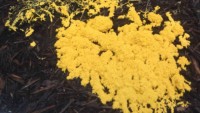Alien Life Forms Might Abound in New Subglacial Antarctic Lake
| Arthur Dominic Villasanta | | Apr 29, 2016 05:55 AM EDT |
(Photo : NASA) Antarctica
A sub-glacial lake in the last un-researched part of Antarctica probably harbors a plethora of alien or new life forms either trapped underneath layers of ice for 25 million years or thriving in its frigid ecosystem.
The newly-discovered lake cuts through a massive canyon system along Antarctica's eastern coast in Princess Elizabeth Land claimed by Australia. It's thought to be 87 miles long and 12 miles wide, which would make it the second largest subglacial lake behind Lake Vostok, which is also in Antarctica. It's located some 2.2 miles beneath the surface of the ice sheet covering Antarctica.
Like Us on Facebook
The existence of the lake was surmised based on satellite and aerial photographs that all provided evidence of the huge underground lake. Scientists expect to confirm the lake's existence in May.
Biologists are thrilled at the idea the lake might harbor living ancient life forms that can be studied. They believe the lake might be home to only microbial life but are hopeful they might find some higher forms of life, as well. Among the latter might be alien but complex organisms that have used evolution to survive in the harsh and deadly Antarctic cold.
Their optimism at discovering life forms in the new lake is based on experience gained in the survey of Lake Vostok by Russian scientists that yielded over 3,500 different DNA sequences. These belonged to bacteria, eukaryotes and other single celled organisms. The Russians reported that some of the new organisms were so alien they didn't match any existing life form on Earth.
Some 170 million years ago when it was part of the supercontinent called Gondwana, Antarctica had a tropical climate. It was heavily forested and harbored a multitude of ancient life forms. Antarctica turned cold 25 million years ago when Gondwana splintered.
TagsSubglacial Antarctic Lake, Antarctica, Princess Elizabeth Land, Lake Vostok
©2015 Chinatopix All rights reserved. Do not reproduce without permission
EDITOR'S PICKS
-

Did the Trump administration just announce plans for a trade war with ‘hostile’ China and Russia?
-

US Senate passes Taiwan travel bill slammed by China
-

As Yan Sihong’s family grieves, here are other Chinese students who went missing abroad. Some have never been found
-

Beijing blasts Western critics who ‘smear China’ with the term sharp power
-

China Envoy Seeks to Defuse Tensions With U.S. as a Trade War Brews
-

Singapore's Deputy PM Provides Bitcoin Vote of Confidence Amid China's Blanket Bans
-

China warns investors over risks in overseas virtual currency trading
-

Chinese government most trustworthy: survey
-

Kashima Antlers On Course For Back-To-Back Titles
MOST POPULAR
LATEST NEWS
Zhou Yongkang: China's Former Security Chief Sentenced to Life in Prison

China's former Chief of the Ministry of Public Security, Zhou Yongkang, has been given a life sentence after he was found guilty of abusing his office, bribery and deliberately ... Full Article
TRENDING STORY

China Pork Prices Expected to Stabilize As The Supplies Recover

Elephone P9000 Smartphone is now on Sale on Amazon India

There's a Big Chance Cliffhangers Won't Still Be Resolved When Grey's Anatomy Season 13 Returns

Supreme Court Ruled on Samsung vs Apple Dispute for Patent Infringement

Microsoft Surface Pro 5 Rumors and Release Date: What is the Latest?












